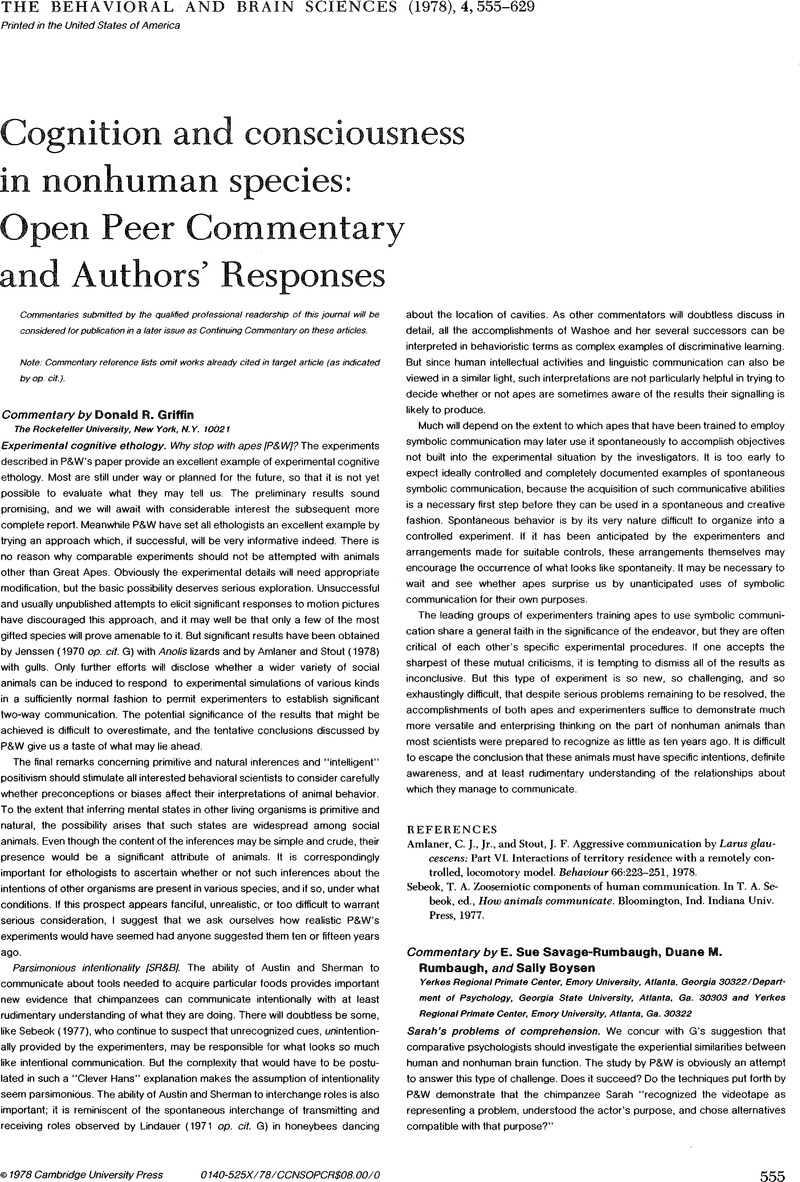Article contents
Behavioral programming in honeybees [G]
Published online by Cambridge University Press: 04 February 2010
Abstract
An abstract is not available for this content so a preview has been provided. Please use the Get access link above for information on how to access this content.

- Type
- Open Peer Commentary
- Information
- Behavioral and Brain Sciences , Volume 1 , Issue 4: A Special Issue on Cognition and Consiousness in Nonhuman Species , December 1978 , pp. 572 - 573
- Copyright
- Copyright © Cambridge University Press 1978
References
REFERENCES
Kuhn, T. S.The structure of scientific revolutions. Chicago: Univ. of Chicago Press, 1962.Google Scholar
Lorenz, K. Z. and Tinbergen, N.Taxis and Instinkthandlung in der Eirollbewegung der Graugans. Zeitschrift für Tierpsychologie. 2:328–342, 1938.Google Scholar
Lovell, H. B. Sources of nectar and pollen. In Grout, R. A. (ed.) Hive and honey bee, pp. 191–206. Hamilton, Ill.: Dadant, 1963.Google Scholar
Marler, P.Song development in white-crowned sparrows. Journal of Comparative and Physiological Psychology. 71:1–25, 1970.CrossRefGoogle Scholar
Pankiw, P.Studies of honey bees on alfalfa flowers. Journal of Apicultural Research. 6:105–112, 1967.CrossRefGoogle Scholar
Reinhardt, J. F.Responses of honey bees to alfalfa flowers. American Naturalist. 86:257–275, 1952.CrossRefGoogle Scholar
- 1
- Cited by


